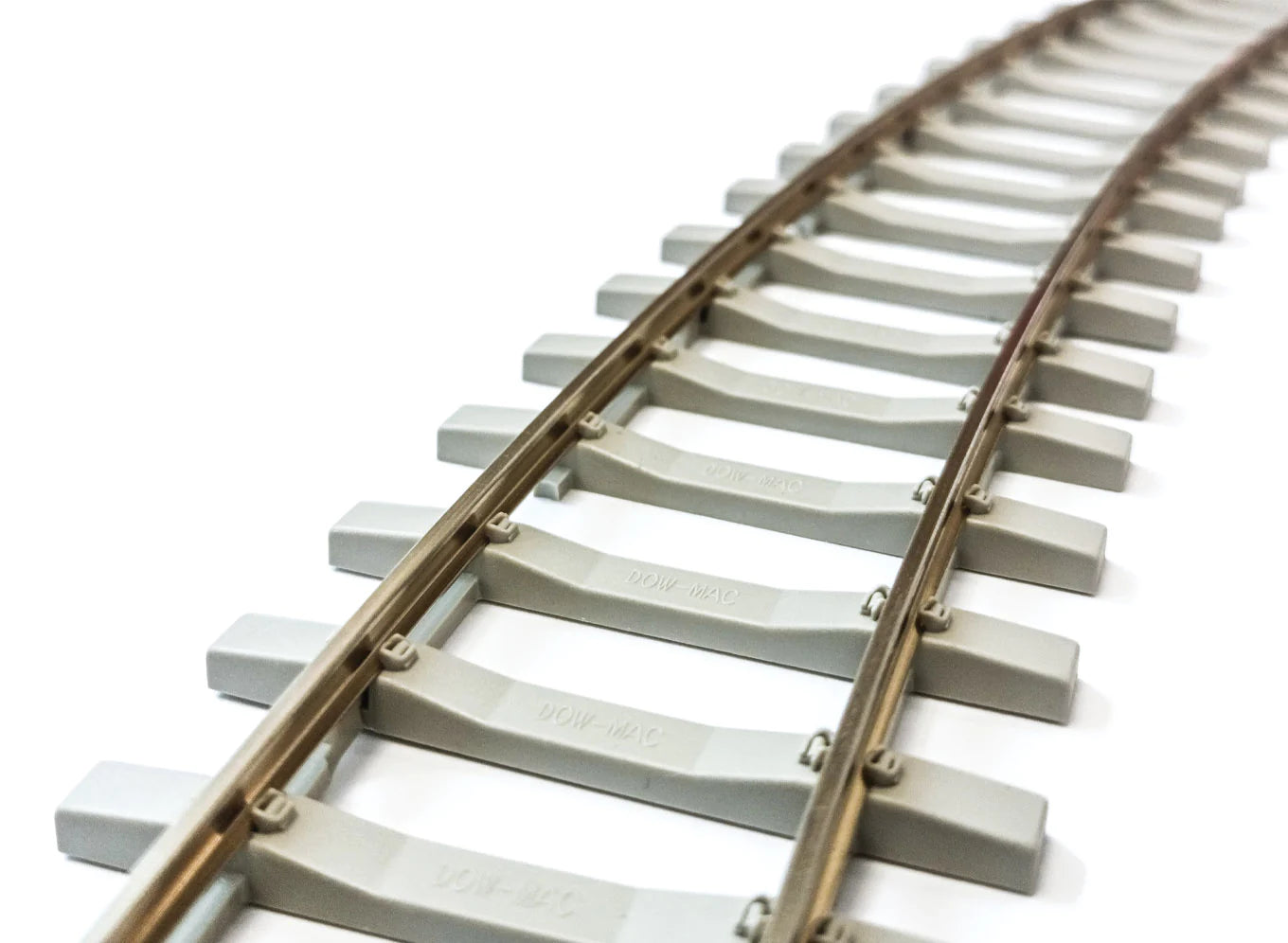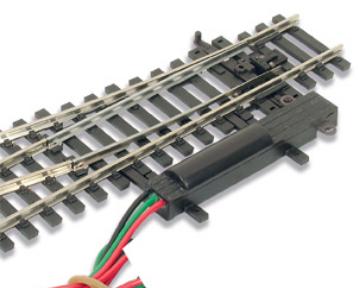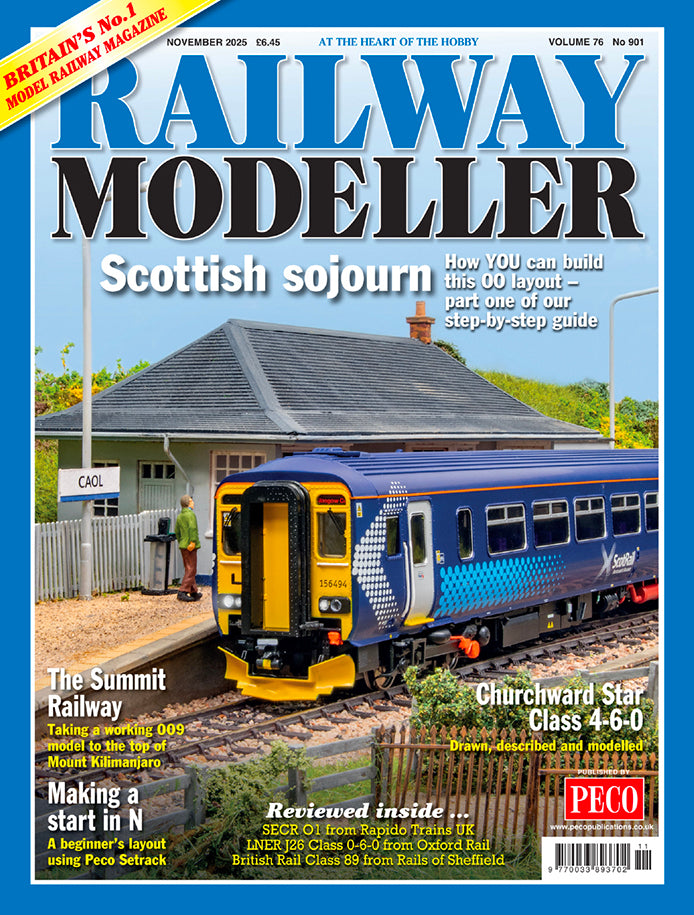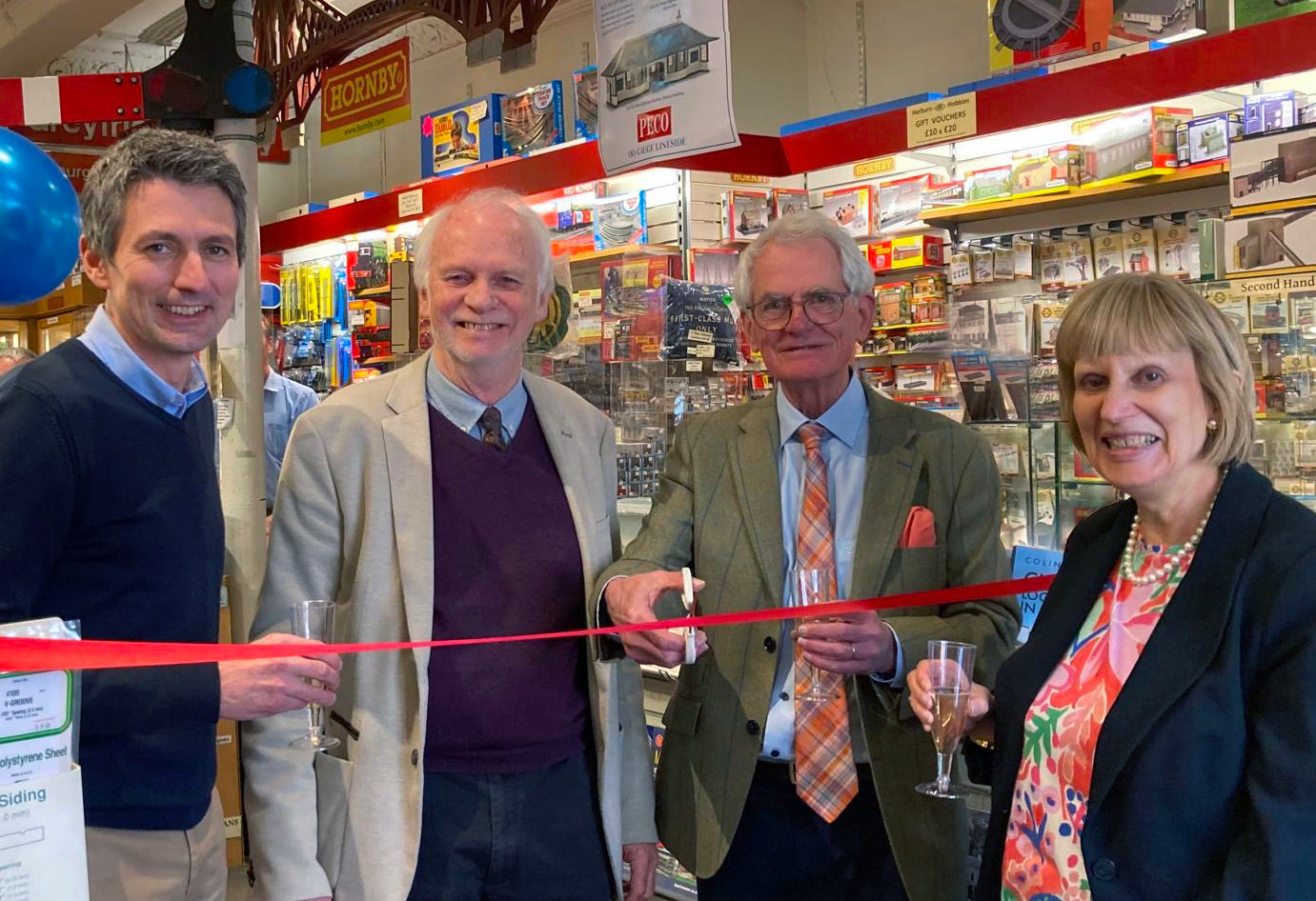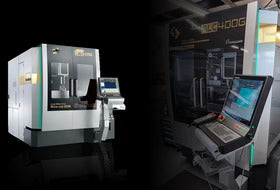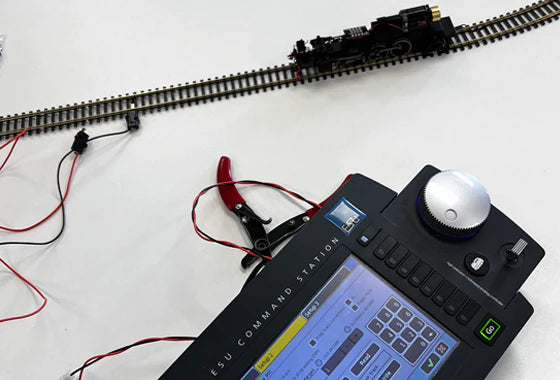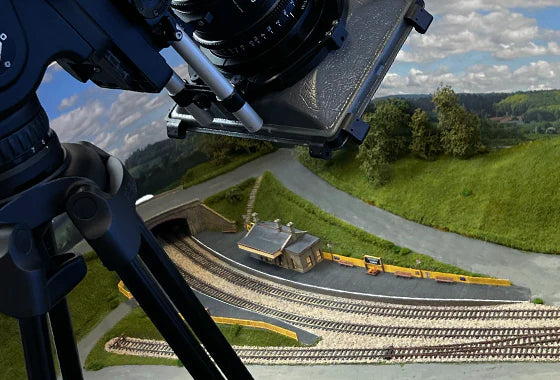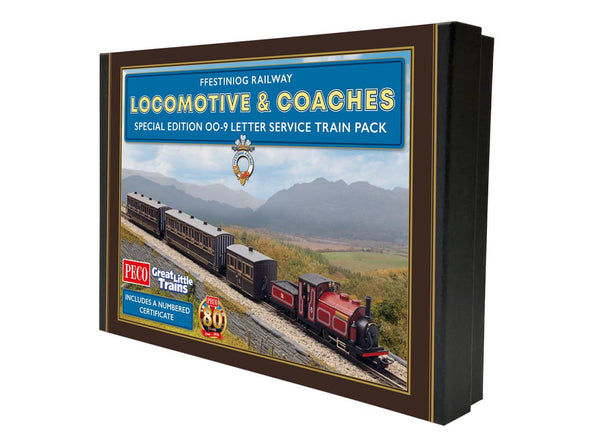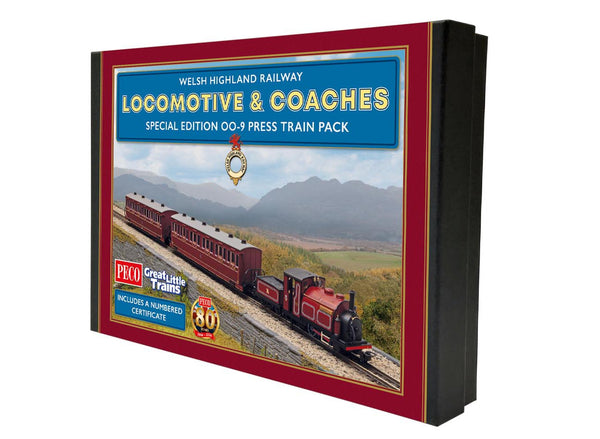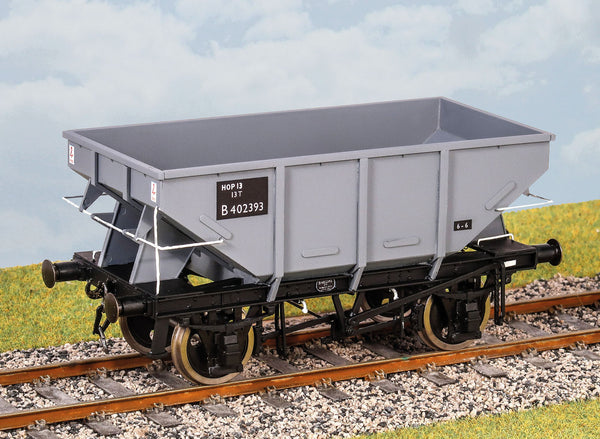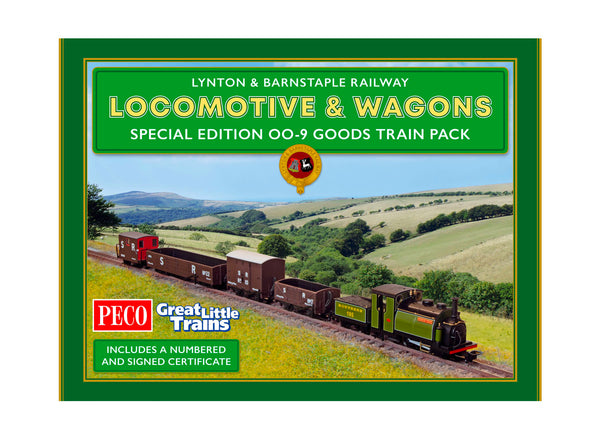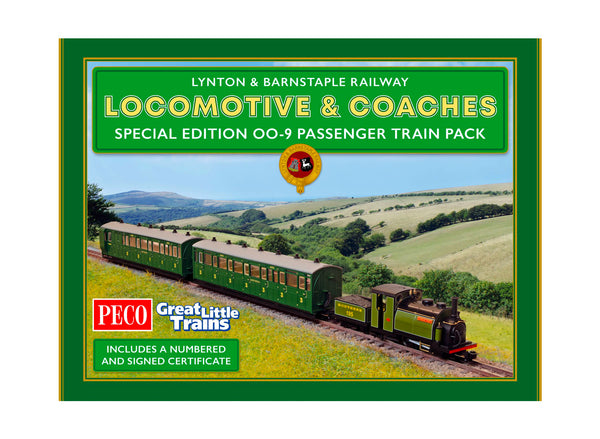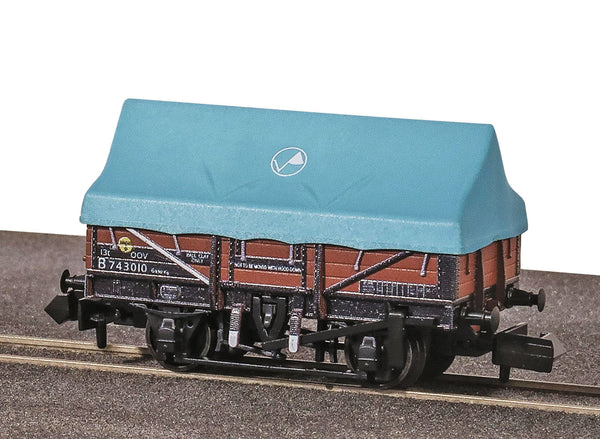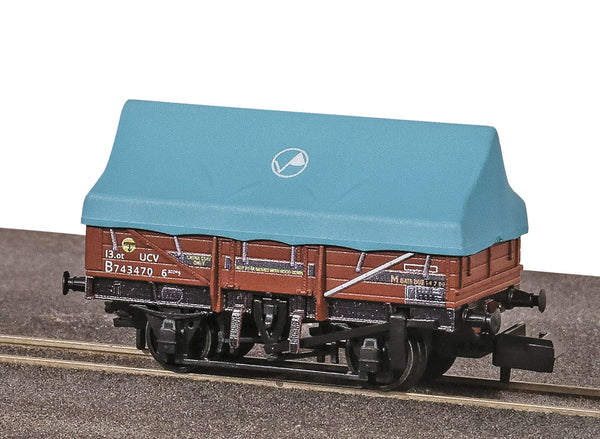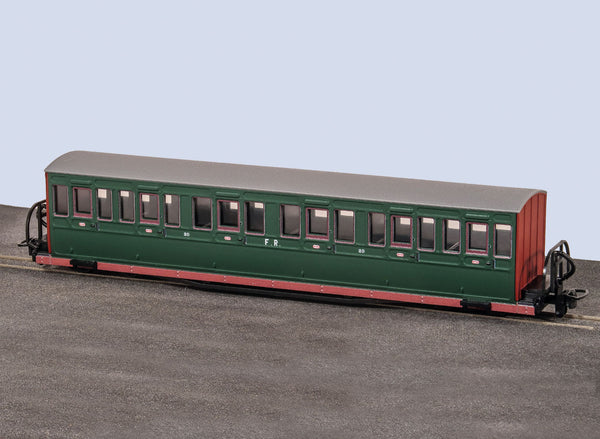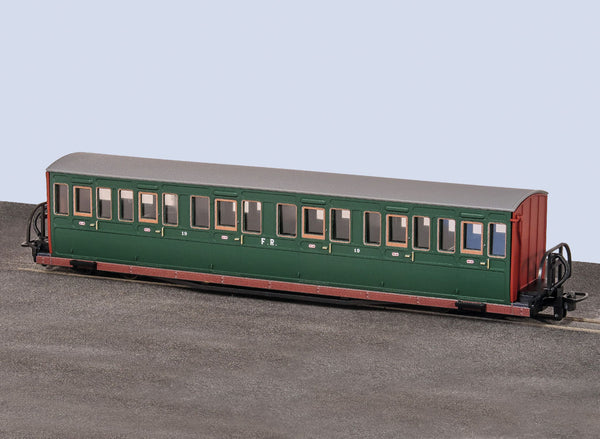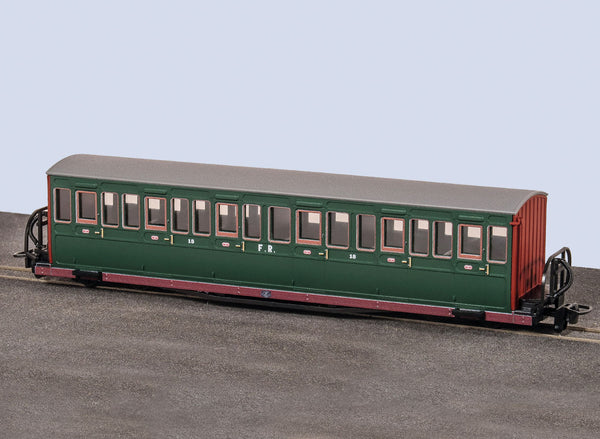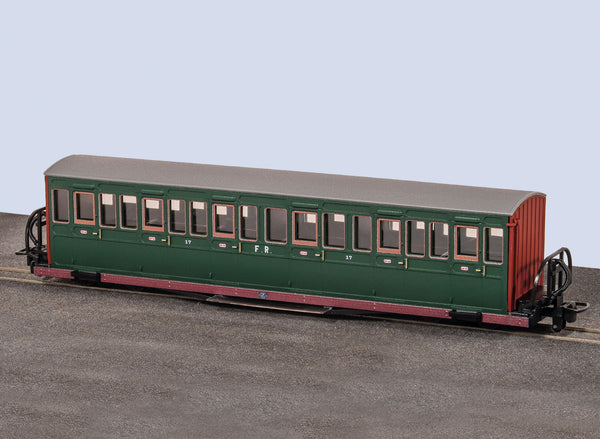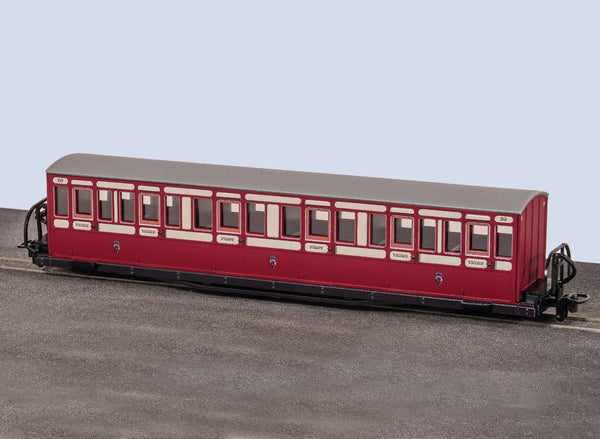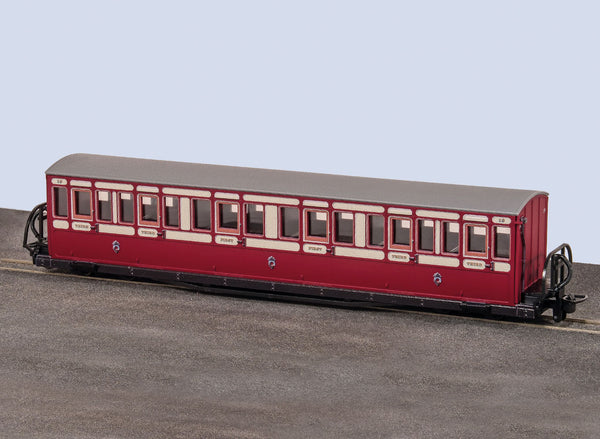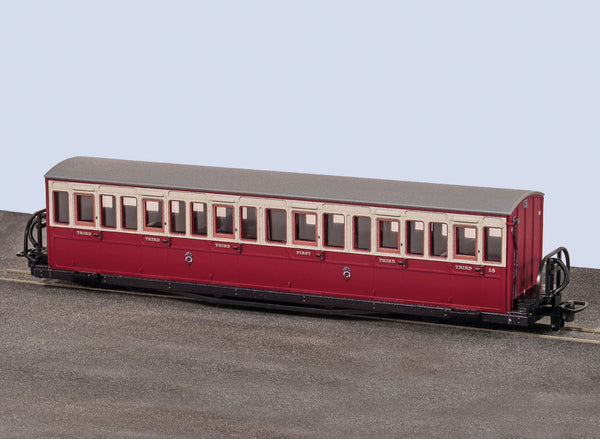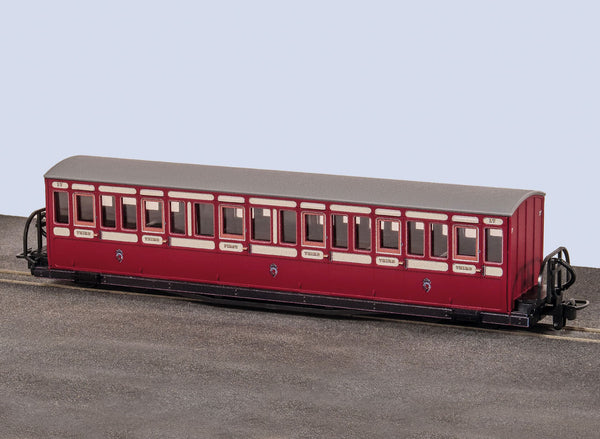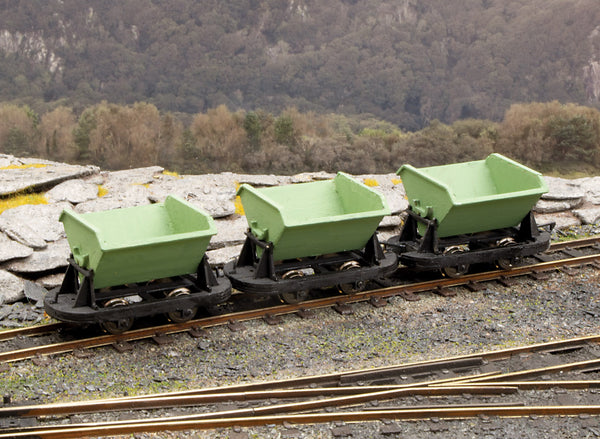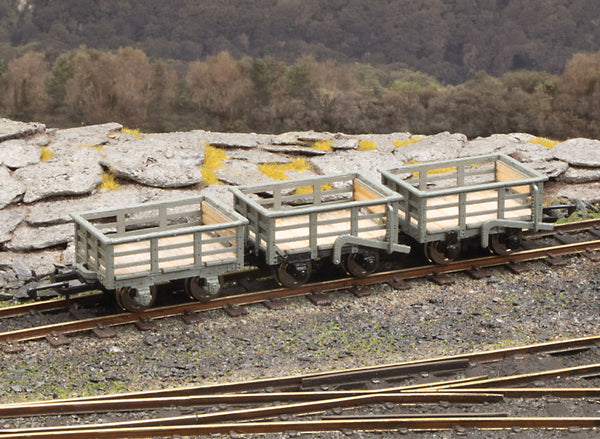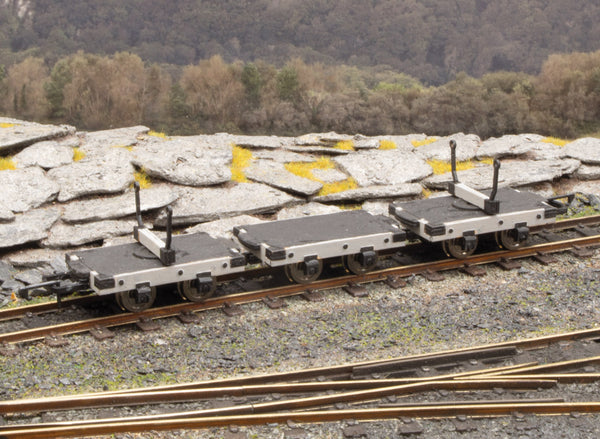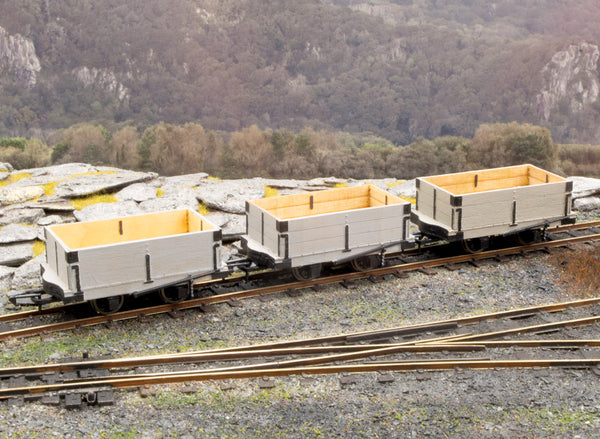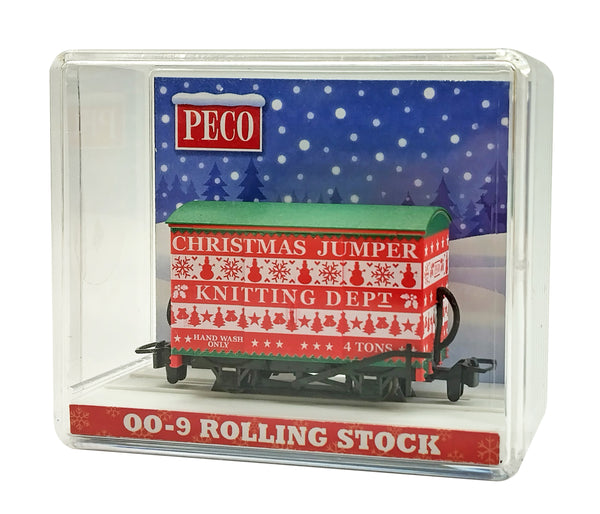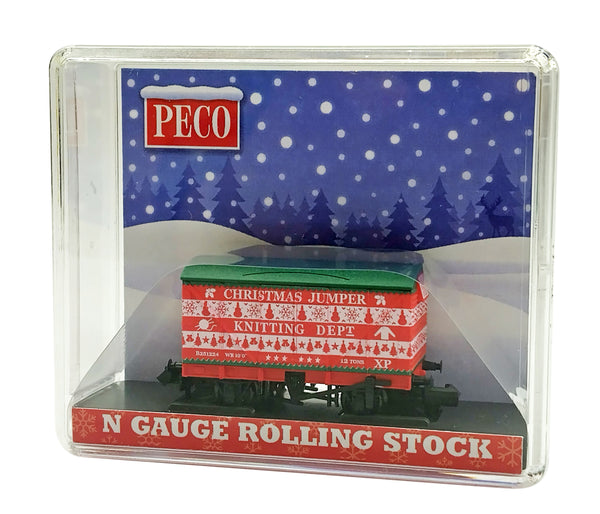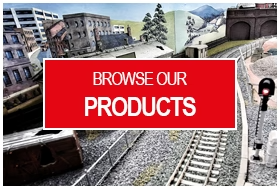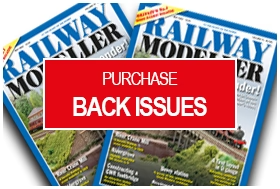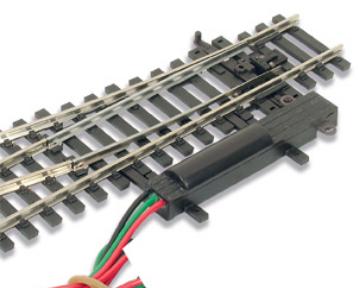BROWSE PECO PRODUCTS
Browse through our complete product portfolio.
42 Products Found
Special Edition OO-9 Letter Service Train Pack (Ffestiniog Railway)
The Ffestiniog Railway, located in North Wales, is the world’s oldest surviving independent railway company, founded in 1832. Originally built to transport slate from the quarries of Blaenau Ffestiniog to the port at Porthmadog, it was engineered with a unique narrow gauge of just 1 ft 11½ in (597 mm), ideal for winding through the rugged Snowdonia landscape. Innovative features included gravity-powered slate trains running downhill and horses hauling the wagons back uphill.
In the 1860s, steam locomotives were introduced, making the Ffestiniog the first narrow-gauge railway in the world to successfully use them. After declining slate demand led to closure in 1946, dedicated volunteers began restoring the line in the 1950s. Today, it runs as a popular heritage railway, linking Porthmadog to Blaenau Ffestiniog once again, and is celebrated for its pioneering engineering, scenic beauty, and remarkable preservation story.
These latest PECO train packs celebrate that legacy with attention to authenticity and a passion for detail.
Special Edition OO-9 Press Train Pack (Welsh Highland Railway)
The Ffestiniog Railway, located in North Wales, is the world’s oldest surviving independent railway company, founded in 1832. Originally built to transport slate from the quarries of Blaenau Ffestiniog to the port at Porthmadog, it was engineered with a unique narrow gauge of just 1 ft 11½ in (597 mm), ideal for winding through the rugged Snowdonia landscape. Innovative features included gravity-powered slate trains running downhill and horses hauling the wagons back uphill.
In the 1860s, steam locomotives were introduced, making the Ffestiniog the first narrow-gauge railway in the world to successfully use them. After declining slate demand led to closure in 1946, dedicated volunteers began restoring the line in the 1950s. Today, it runs as a popular heritage railway, linking Porthmadog to Blaenau Ffestiniog once again, and is celebrated for its pioneering engineering, scenic beauty, and remarkable preservation story.
These latest PECO train packs celebrate that legacy with attention to authenticity and a passion for detail.
O Gauge BR-LNER Steel Hopper Wagon Kit
The British Railways LNER 13-ton steel hopper wagon was based on an LNER design but produced in the early British Railways era between 1949 and 1953. It marked a step forward from earlier wooden-bodied wagons by using an all-steel, welded construction, which offered improved durability and reduced maintenance needs. The design reflected the LNER’s long-standing experience with mineral wagons, but was adapted for post-war production methods in BR workshops such as those at Shildon, Faverdale, and York.
Over 2,600 of these wagons were built, and they became a common sight in the North Eastern Region. This was partly because many goods yards in the area had coal-drop staithes, making the bottom-discharge hopper design especially efficient for unloading bulk materials. While they were primarily intended for transporting coal, the hoppers proved versatile and were later used to carry stone, sand, and other aggregates.
The 13-ton steel hopper was a reliable and workmanlike vehicle that served across the UK for several decades. Its robust construction meant it could withstand heavy use, and it became a mainstay of freight traffic in the post-war period. Although newer wagon designs eventually replaced them, some examples remained in service into the early 1980s, making them one of the longer-lived mineral wagon types of the mid-20th century.
Special Edition OO-9 Goods Train Pack
Inspired by one of Britain’s most beloved narrow-gauge railways – the Lynton & Barnstaple, these exclusive new packs feature the beautifully detailed KATO Large England locomotive “Exmoor Pony” paired with unique-liveried rolling stock – only available in these sets and not sold separately.
Each pack comes in a smart, collector-style presentation box, complete with custom packaging and a striking outer sleeve – perfect for displaying or gifting.
Special Edition OO-9 Passenger Train Pack
Inspired by one of Britain’s most beloved narrow-gauge railways – the Lynton & Barnstaple, these exclusive new packs feature the beautifully detailed KATO Large England locomotive “Exmoor Pony” paired with unique-liveried rolling stock – only available in these sets and not sold separately.
Each pack comes in a smart, collector-style presentation box, complete with custom packaging and a striking outer sleeve – perfect for displaying or gifting.
NEW China Clay Hood Wagon, OOV B743010
Railway companies all had a stock of their own vehicles for carrying goods and merchandise around their network, and also onto other companies' routes as and when required. These were integrated into British Railways at Nationalisation; some of them to be once more re liveried under sectorisation as the network was prepared to be returned to private ownership. All PECO wagons feature free running wheels in pin point axles. The ELC coupling, whilst compatible with the standard N gauge couplings, keeps a realistic distance between the vehicles and enables the PL-25 electro magnetic decoupler to be used for remote uncoupling.
NEW China Clay Hood Wagon, UCV B743470, Bauxite
Railway companies all had a stock of their own vehicles for carrying goods and merchandise around their network, and also onto other companies' routes as and when required. These were integrated into British Railways at Nationalisation; some of them to be once more re liveried under sectorisation as the network was prepared to be returned to private ownership. All PECO wagons feature free running wheels in pin point axles. The ELC coupling, whilst compatible with the standard N gauge couplings, keeps a realistic distance between the vehicles and enables the PL-25 electro magnetic decoupler to be used for remote uncoupling.
NEW China Clay Hood Wagon, UCV B743665, Bauxite
Railway companies all had a stock of their own vehicles for carrying goods and merchandise around their network, and also onto other companies' routes as and when required. These were integrated into British Railways at Nationalisation; some of them to be once more re liveried under sectorisation as the network was prepared to be returned to private ownership. All PECO wagons feature free running wheels in pin point axles. The ELC coupling, whilst compatible with the standard N gauge couplings, keeps a realistic distance between the vehicles and enables the PL-25 electro magnetic decoupler to be used for remote uncoupling.
FR Long 'Bowsider' Coach - Colonel Stephens No.20
The Ffestiniog Railway operated two pairs of bogie coaches numbered 17-20 and built by Brown Marshalls & Co and Gloucester Wagon Co. They were known as ‘Bowsiders’ because of the tumblehome shape of their sides. Numbers 17 and 18, built in 1876 are shorter with one 1st class compartment. Numbers 19 and 20, built in 1879 are longer with two 1st class compartments. All four are still in service on the Ffestiniog Railway today.
In the 1920s the elaborate liveries of the Victorian era were replaced with a simple scheme of green with red end panels. It became known as the ‘Colonel Stephens’ livery, after the General Manager of the Ffestiniog Railway from 1925 until his passing in 1931. The colour scheme was used until the end of passenger operations in 1939, sometimes alongside other colours such as yellow, in the mid 1930s.
Green with red ends was applied to carriage No.20 once again from 2005 until 2024, as depicted by GR-623B.
FR Long 'Bowsider' Coach - Colonel Stephens No.19
The Ffestiniog Railway operated two pairs of bogie coaches numbered 17-20 and built by Brown Marshalls & Co and Gloucester Wagon Co. They were known as ‘Bowsiders’ because of the tumblehome shape of their sides. Numbers 17 and 18, built in 1876 are shorter with one 1st class compartment. Numbers 19 and 20, built in 1879 are longer with two 1st class compartments. All four are still in service on the Ffestiniog Railway today.
In the 1920s the elaborate liveries of the Victorian era were replaced with a simple scheme of green with red end panels. It became known as the ‘Colonel Stephens’ livery, after the General Manager of the Ffestiniog Railway from 1925 until his passing in 1931. The colour scheme was used until the end of passenger operations in 1939, sometimes alongside other colours such as yellow, in the mid 1930s.
Green with red ends was applied to carriage No.20 once again from 2005 until 2024, as depicted by GR-623B.
FR Short 'Bowsider' Coach - Colonel Stephens No.18
The Ffestiniog Railway operated two pairs of bogie coaches numbered 17-20 and built by Brown Marshalls & Co and Gloucester Wagon Co. They were known as ‘Bowsiders’ because of the tumblehome shape of their sides. Numbers 17 and 18, built in 1876 are shorter with one 1st class compartment. Numbers 19 and 20, built in 1879 are longer with two 1st class compartments. All four are still in service on the Ffestiniog Railway today.
In the 1920s the elaborate liveries of the Victorian era were replaced with a simple scheme of green with red end panels. It became known as the ‘Colonel Stephens’ livery, after the General Manager of the Ffestiniog Railway from 1925 until his passing in 1931. The colour scheme was used until the end of passenger operations in 1939, sometimes alongside other colours such as yellow, in the mid 1930s.
Green with red ends was applied to carriage No.20 once again from 2005 until 2024, as depicted by GR-623B.
FR Short 'Bowsider' Coach - Colonel Stephens No.17
The Ffestiniog Railway operated two pairs of bogie coaches numbered 17-20 and built by Brown Marshalls & Co and Gloucester Wagon Co. They were known as ‘Bowsiders’ because of the tumblehome shape of their sides. Numbers 17 and 18, built in 1876 are shorter with one 1st class compartment. Numbers 19 and 20, built in 1879 are longer with two 1st class compartments. All four are still in service on the Ffestiniog Railway today.
In the 1920s the elaborate liveries of the Victorian era were replaced with a simple scheme of green with red end panels. It became known as the ‘Colonel Stephens’ livery, after the General Manager of the Ffestiniog Railway from 1925 until his passing in 1931. The colour scheme was used until the end of passenger operations in 1939, sometimes alongside other colours such as yellow, in the mid 1930s.
Green with red ends was applied to carriage No.20 once again from 2005 until 2024, as depicted by GR-623B.
FR Long 'Bowsider' Coach - Red & Cream No.20
The Ffestiniog Railway operated two pairs of bogie coaches numbered 17-20 and built by Brown Marshalls & Co and Gloucester Wagon Co. They were known as ‘Bowsiders’ because of the tumblehome shape of their sides. Numbers 17 and 18, built in 1876 are shorter with one 1st class compartment. Numbers 19 and 20, built in 1879 are longer with two 1st class compartments. All four are still in service on the Ffestiniog Railway today.
The red and cream livery was first applied to a rake of carriages in 1987 for the ‘Mountain Prince’ train service. Carriage 20 was the first Bowsider to appear in the livery.
Carriages 17 and 18 had cream applied to the full upper half of the carriage. 17 had the mouldings reinstated in 1990 as depicted by GR-602A. 18 continued to have cream across the upper half throughout its time in the scheme, as represented by GR-602B. Note the ‘Brown Marshalls & Co. Ltd’ builders plate printed on the ends of the carriage.
All four Bowsiders were repainted into historic liveries in the 2000s, but the red and cream colour scheme is still seen today on the more modern carriages
FR Long 'Bowsider' Coach - Red & Cream No.19
The Ffestiniog Railway operated two pairs of bogie coaches numbered 17-20 and built by Brown Marshalls & Co and Gloucester Wagon Co. They were known as ‘Bowsiders’ because of the tumblehome shape of their sides. Numbers 17 and 18, built in 1876 are shorter with one 1st class compartment. Numbers 19 and 20, built in 1879 are longer with two 1st class compartments. All four are still in service on the Ffestiniog Railway today.
The red and cream livery was first applied to a rake of carriages in 1987 for the ‘Mountain Prince’ train service. Carriage 20 was the first Bowsider to appear in the livery.
Carriages 17 and 18 had cream applied to the full upper half of the carriage. 17 had the mouldings reinstated in 1990 as depicted by GR-602A. 18 continued to have cream across the upper half throughout its time in the scheme, as represented by GR-602B. Note the ‘Brown Marshalls & Co. Ltd’ builders plate printed on the ends of the carriage.
All four Bowsiders were repainted into historic liveries in the 2000s, but the red and cream colour scheme is still seen today on the more modern carriages
FR Short 'Bowsider' Coach - Red & Cream No.18
The Ffestiniog Railway operated two pairs of bogie coaches numbered 17-20 and built by Brown Marshalls & Co and Gloucester Wagon Co. They were known as ‘Bowsiders’ because of the tumblehome shape of their sides. Numbers 17 and 18, built in 1876 are shorter with one 1st class compartment. Numbers 19 and 20, built in 1879 are longer with two 1st class compartments. All four are still in service on the Ffestiniog Railway today.
The red and cream livery was first applied to a rake of carriages in 1987 for the ‘Mountain Prince’ train service. Carriage 20 was the first Bowsider to appear in the livery.
Carriages 17 and 18 had cream applied to the full upper half of the carriage. 17 had the mouldings reinstated in 1990 as depicted by GR-602A. 18 continued to have cream across the upper half throughout its time in the scheme, as represented by GR-602B. Note the ‘Brown Marshalls & Co. Ltd’ builders plate printed on the ends of the carriage.
All four Bowsiders were repainted into historic liveries in the 2000s, but the red and cream colour scheme is still seen today on the more modern carriages
FR Short 'Bowsider' Coach - Red & Cream No.17
The Ffestiniog Railway operated two pairs of bogie coaches numbered 17-20 and built by Brown Marshalls & Co and Gloucester Wagon Co. They were known as ‘Bowsiders’ because of the tumblehome shape of their sides. Numbers 17 and 18, built in 1876 are shorter with one 1st class compartment. Numbers 19 and 20, built in 1879 are longer with two 1st class compartments. All four are still in service on the Ffestiniog Railway today.
The red and cream livery was first applied to a rake of carriages in 1987 for the ‘Mountain Prince’ train service. Carriage 20 was the first Bowsider to appear in the livery.
Carriages 17 and 18 had cream applied to the full upper half of the carriage. 17 had the mouldings reinstated in 1990 as depicted by GR-602A. 18 continued to have cream across the upper half throughout its time in the scheme, as represented by GR-602B. Note the ‘Brown Marshalls & Co. Ltd’ builders plate printed on the ends of the carriage.
All four Bowsiders were repainted into historic liveries in the 2000s, but the red and cream colour scheme is still seen today on the more modern carriages
GVT Brakevan Laser-cut kit (NG7)
Laser cut wagon kit of a 4-wheel Glyn Valley Tramway brakevan.
Penrhyn Quarry Workmen's Coach Laser-cut kit (NG7)
Laser cut wagon kit of a 4-wheel narrow Penrhyn Quarry Workmen's Coach, easily adapted for anyone's freelance railway.
V-Skip Side Tip Wagons (3) Laser-cut kits (NG7)
Laser cut wagon kit of a 4-wheel narrow gauge V-Skip wagons found at many industrial locations.
Tipper body can be left loose to enable it to tip prototypically.
Features metal disk wheels that run freely in brass bearings.
Contains plastic tension-lock couplings and NEM pockets. Options for omitting couplings completely or fitting them integrally to the wagon chassis for prototypical close-coupling.
Pack of 3 wagons.
Penrhyn Quarry Railway Slate Wagons (3) Laser-cut kits (NG7)
Laser-cut wagon kits of 4-wheel narrow gauge bolster wagons found at many industrial locations.
Penrhyn Quarry Railway Bolster Wagons (3) Laser-cut kits (NG7)
Laser-cut wagon kits of 4-wheel narrow gauge bolster wagons found at many industrial locations.
GVT Open Wagons (3) Laser-cut kits (NG7)
Laser-cut wagon kit of 3 x 4-wheel narrow gauge open wagons found at many industrial locations.
OO-9 'Christmas Jumper Dept' Box Van
PECO Model Railways has released a delightful addition to their Christmas collection with limited-edition wagons available in N and OO-9. Celebrating the festive spirit, this year’s model is dedicated to the 'Christmas Jumper Knitting Department'. Adorned in charming holiday-themed colours, the wagons feature intricate seasonal designs reminiscent of classical Christmas jumpers. Each wagon in this collection is crafted with meticulous detail, capturing the playful essence of holiday cheer in a miniature format.
Only 500 pieces are available in each scale, making these wagons truly special collector’s items for railway enthusiasts and collectors. This seasonal release adds to the PECO lineup of collectible Christmas wagons, creating an enchanting winter landscape on any model railway setup. These limited editions make perfect Christmas gifts or keepsakes and are available now, though stock won’t last long due to their exclusivity and appeal.
N Gauge 'Christmas Jumper Dept' Vanfit
PECO Model Railways has released a delightful addition to their Christmas collection with limited-edition wagons available in N and OO-9. Celebrating the festive spirit, this year’s model is dedicated to the 'Christmas Jumper Knitting Department'. Adorned in charming holiday-themed colours, the wagons feature intricate seasonal designs reminiscent of classical Christmas jumpers. Each wagon in this collection is crafted with meticulous detail, capturing the playful essence of holiday cheer in a miniature format.
Only 500 pieces are available in each scale, making these wagons truly special collector’s items for railway enthusiasts and collectors. This seasonal release adds to the PECO lineup of collectible Christmas wagons, creating an enchanting winter landscape on any model railway setup. These limited editions make perfect Christmas gifts or keepsakes and are available now, though stock won’t last long due to their exclusivity and appeal.
